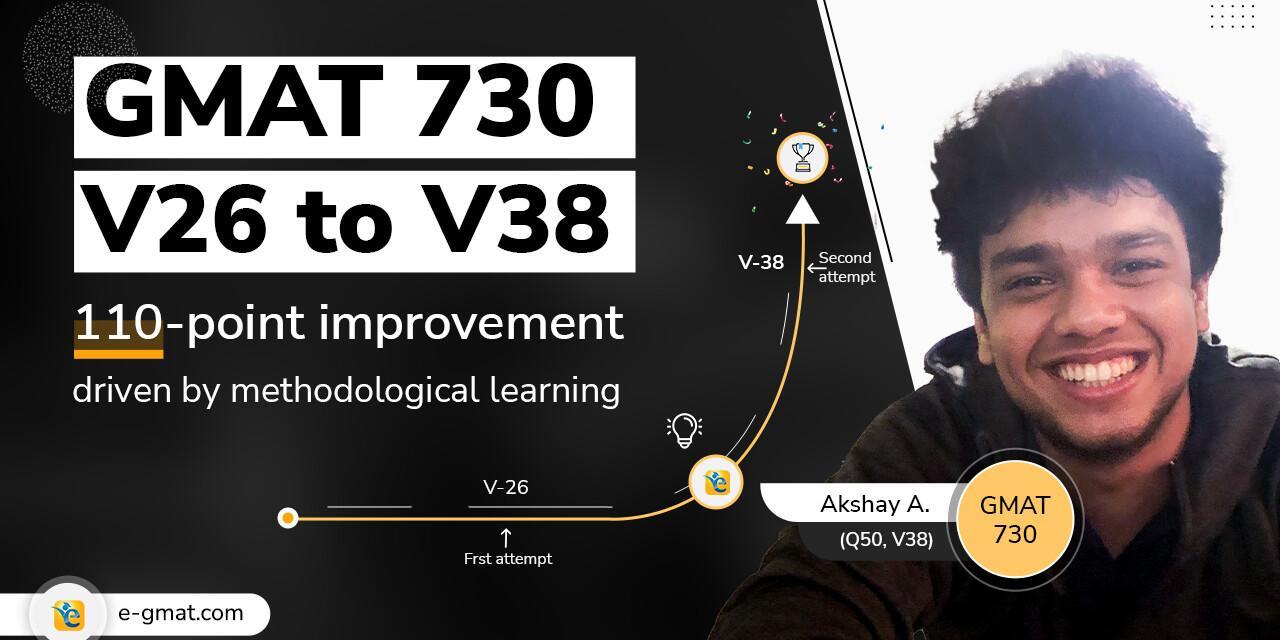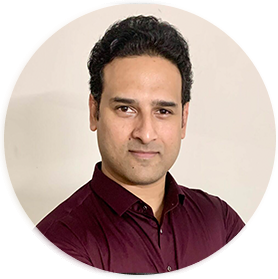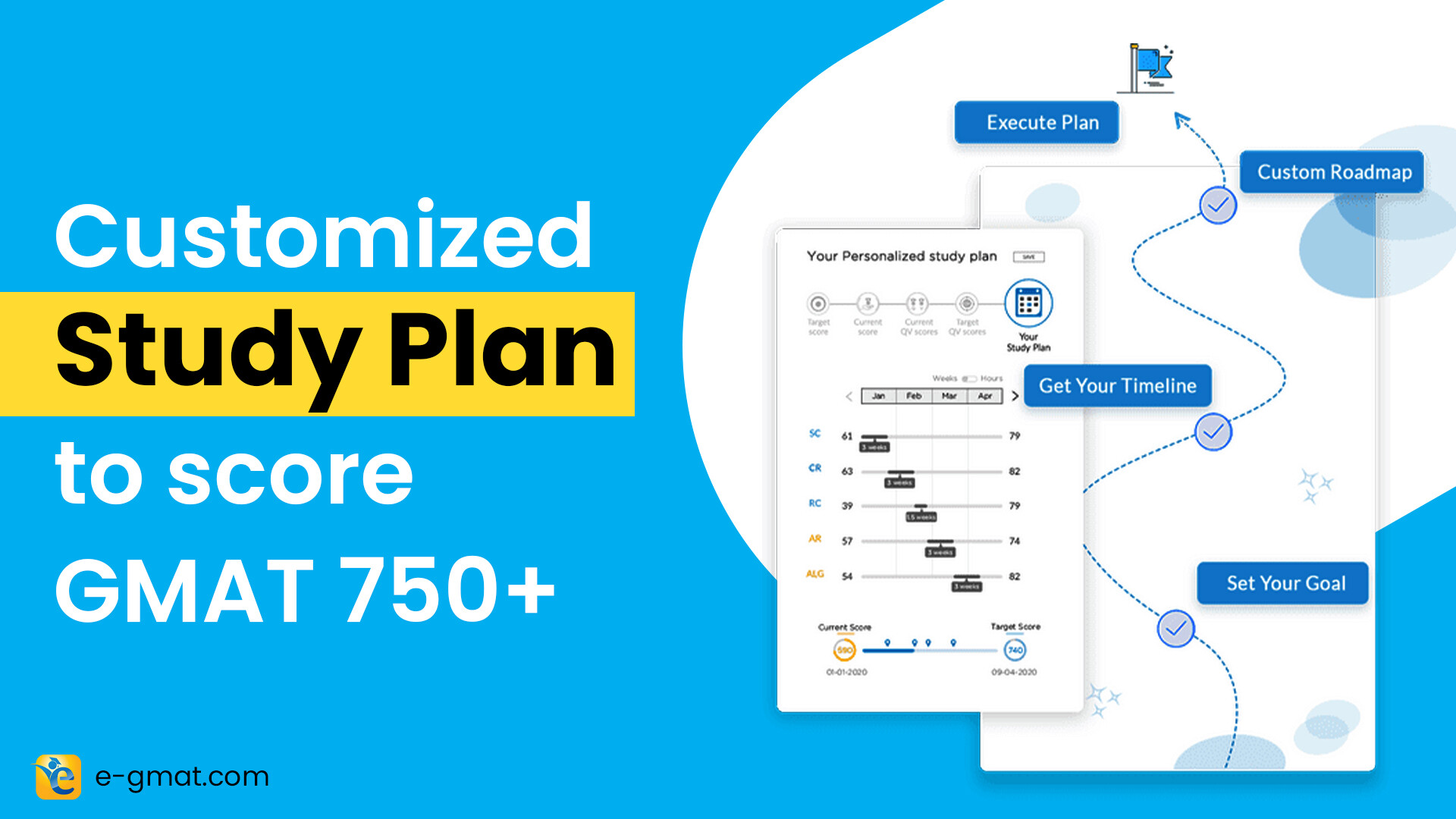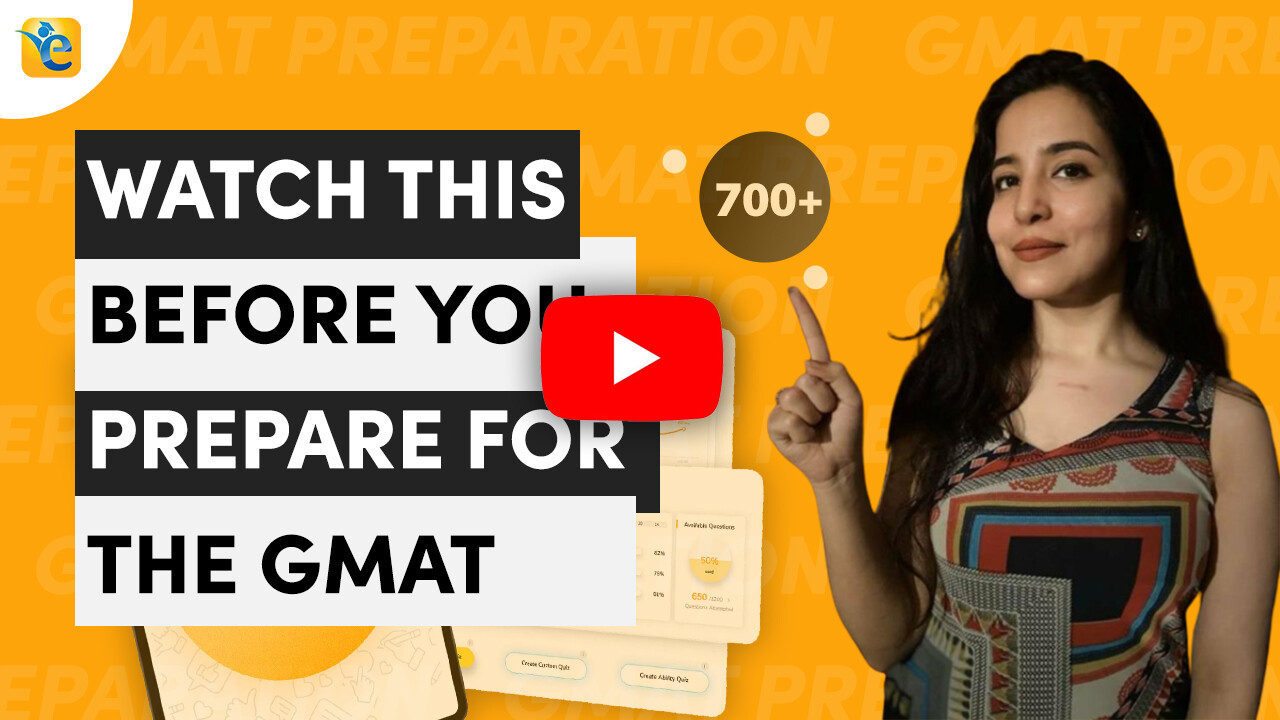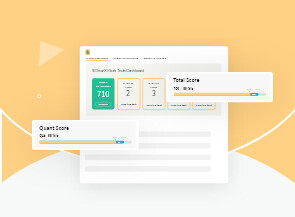An engineering graduate from IIT Roorkee, one of the top technical institutes of India, Akshay missed factoring in the adaptability aspect of the GMAT and ended up taking two attempts to score a GMAT 730.
With a solid academic background and experience with tough competitive exams, Akshay thought his approaches in the past would suffice for the GMAT.
He began his preparation with a mock, where he scored a 710. This further boosted his confidence in his skills. He was convinced that a little extra push with self-studying would fetch him the desired 730+ score. Despite taking an e-GMAT subscription for GMAT preparation, he did not follow the course seriously and only referred to the course content as help, not as the main path.
Reality stuck him badly when he appeared for the actual GMAT test and scored 620. At first, he could not believe or understand the reason behind such a low score. Akshay realized he needed to change his approach entirely. He committed to fixing his mistakes for his next and final attempt at GMAT.
Watch the video to learn the importance of structured learning and how it helped Akshay build GMAT level abilities to go from V26 to an incredible V42 on the GMAT verbal with a 110-point overall score improvement for a 95th percentile score.
Akshay: After my 620, I touched a plateau with 730 in 40 days. To get more than that, I would have needed more time, at least two months.
GMAT 620 experience
Akshay enrolled in e-GMAT to prepare, and he continued with his study style, which had been helping him succeed to date. His engineering background and high aptitude gave him a good start on his first mock, and he scored a 710.
However, he lacked structure, strategy, and an accurate understanding of the skills an adaptive test like GMAT demands. He ended up scoring a shockingly low 620.
How does GMAT work as a computer adaptive test? maximizing GMAT score is efficient time management using an effective timing strategy. You must leverage the adaptive nature of the GMAT to ensure that you get a shot at higher difficulty level questions and solve most of them correctly so that the algorithm estimates your ability to be high.
Akshay: The course is very well structured, especially the sentence correction. It’s amazing. But I didn’t trust the system. The course was more like a help than a primary path for me, initially.
I could understand all the (GMAT verbal) concepts but never applied them. I thought GMAT was like any other exam which I’d given in the past, wherein practicing with questions is all that’s required. But it did not work.
A month after his first disappointing attempt at the GMAT, Akshay started afresh by making all necessary corrections to his approach. He reached out to e-GMAT support, and this time he had his mentor Rashmi guiding him through his GMAT prep journey.
He trusted the course entirely and began following it as it was laid out. He had 40 days to prepare before his GMAT test date. Following were the changes he made this time that helped him ace the GMAT with 95th percentile.
- Error Log: Unlike before, as suggested by his mentor, he started maintaining error logs
Akshay: “I earlier thought, what’s the use of an error log? I could go back at any time to review any of the previously attempted questions. But the two columns in the error log, “comments” and “what you got wrong” helped me a lot in correcting my mistakes.
Watch this video to learn how to effectively build an error log
- Meaning-based approach: Instead of practicing with questions and hoping for improvement with more and more questions, Akshay learned about the meaning-based approach. He could now smoothly eliminate wrong answer choices and confidently mark correct options even for the hard questions. As he cemented the application of the method, he could sub-consciously apply the method in minimum time during the actual GMAT exam. Watch below video to master SC using Meaning based approach.
Akshay: Any approach other than meaning-based is a crime, no split method or other method works. There are multiple grammatically correct choices in the hard questions, but they differ in meaning, and that’s how you get the right answer. To get anything above V36, you must follow the meaning-based approach.
- Pre-thinking approach: In CR questions, the pre-thinking method helped him resolve the ambiguity in the hard-level questions that he struggled with.
Akshay: I followed all the methods you (my mentor) suggested in the plans you’d made for me. In CR, I could never be satisfied with my answer. But with e-GMAT, I learned to pre-think and identify the patterns in CR questions and how strengthening and weakening of statements work. e-GMAT has a well-established approach to tackle the various patterns in the questions, and the course teaches it well”.
Watch e-GMAT students talk about how a systematic approach and Pre-thinking methodology helped them ace CR and improve timing.
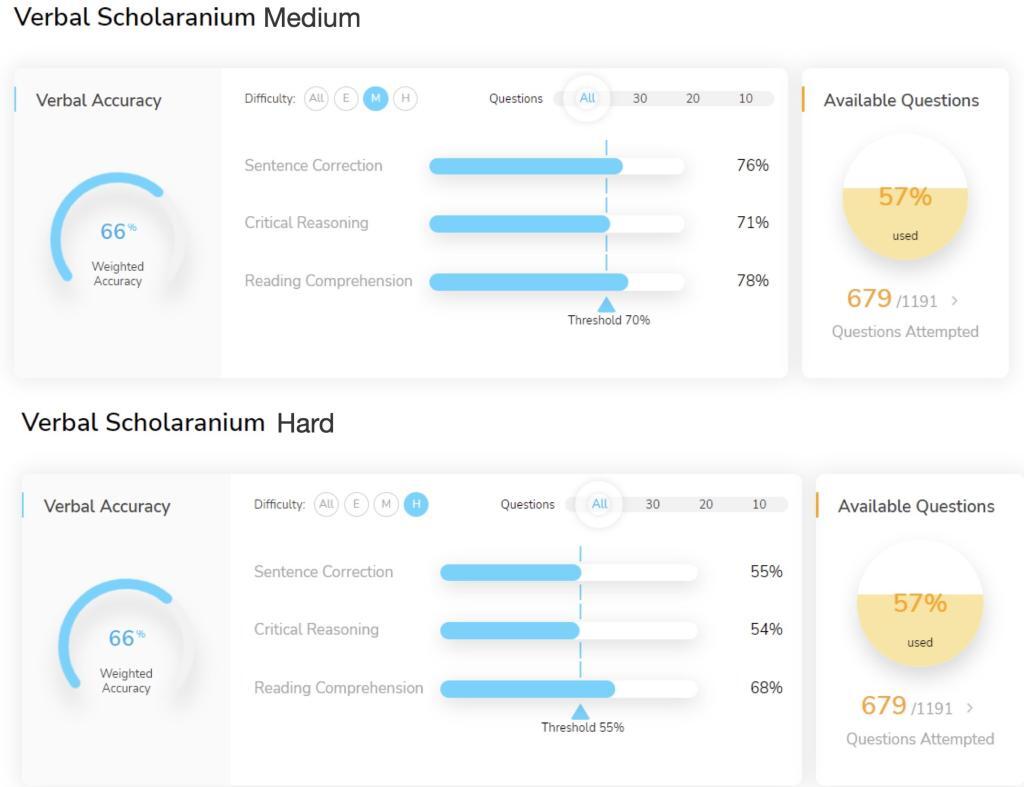
- Strategic Review: In contrast to solving a huge number of question reckless earlier, Askhay now changed his approach and reviewed each and every question in depth and fixed all possible gaps that he had.
Quote: “For the five answer choices in SC, apart from focusing on eliminating incorrect answer choices, it’s critical to find out the reasons behind each incorrect answer to be wrong. With these exercises, for every wrong answer choice, I could now find out various types of mistakes, such as tense verb errors, pronoun errors, modifier errors, etc. Earlier, I’d move forward as soon as I found the correct answer.”
- Skipping strategy: With limited time during the exam, it’s essential to know when to stop spending time on a particular question and how much time is safe to invest in one question. He learned to make a fair judgment of his comfort with the question and decided to skip when necessary. It helped him save time for questions he required to and more time.
Akshay: I learned that I could not be emotional with questions. With the limited time during the exam and increasing difficulty level, it’s not necessary to solve every question.
In my previous attempt, I had only 10 seconds to mark the last three questions, whereas this time, I had 90 seconds to solve the last SC question.
- Test readiness: Apart from building sectional skills in quant, Akshay improved his test-taking abilities significantly.
e-GMAT’s hard questions mostly use simple formulas but demand higher application skills. After practicing hard-level quant questions on Scholaranium, he felt much more comfortable solving 700+ questions despite the exam pressure.
In the actual exam, despite spending 5 minutes each on three questions, I was left with 10 minutes to solve the last question. This was the effect of e-GMAT quant preparation for me.
In the actual exam, despite spending 5 minutes each on three questions, I was left with 10 minutes to solve the last question. This was the effect of e-GMAT quant preparation for me.
- Prep with Mocks: Unlike most students who believe it’s necessary to take as many mocks as possible to score well in the exam. Akshay familiarized himself with the exam environment, adopted test-taking strategies, and learned from his mistakes, all in just two mocks after completing the course.
“I did not require to give more than two mocks because two were enough for me. All I needed was a structured approach and detailed practice. I scored 720+ in both the mocks, and it boosted my confidence.
Want to score a 99%ile score in the GMAT (760+)? A winning GMAT strategy ensures you hit your target GMAT Score. Attend our GMAT strategy session webinar and get started with developing your GMAT Strategy for a high GMAT score
With the strategic changes he made in SC and CR sub-sections, Akshay could tremendously improve his timing and accuracy. His improved verbal ability also helped him improve his RC skills significantly.
Akshay: “I didn’t lift my pen in the entire quant section, except for those three questions, which took 15 minutes. If not for those, I’d have easily scored a Q51.”
His rigorous and consistent work on implementing new methods, following processes, practicing, and reviewing improved his performance in both sections for an overall 110 score jump in the final GMAT.
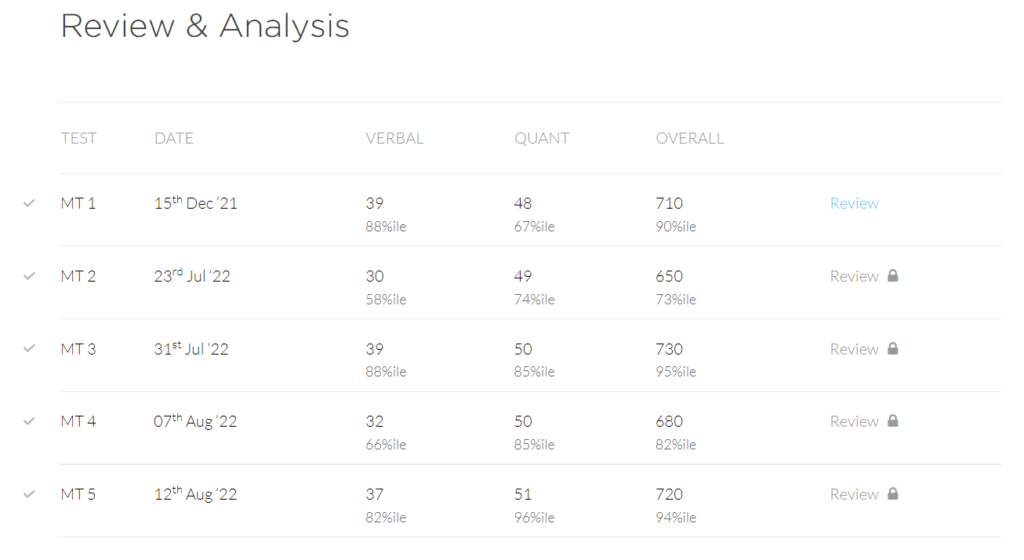
Akshay’s three tips for fellow GMAT aspirants
- Do not forget your passport; although I was allowed to take the test, it definitely disturbed me to a great extent.
- If you’re an Indian student, focus more on verbal. Quant would likely come easy to you but verbal demands a lot of effort. Focus on the meaning-based approach for SC more than grammar.
- Have a flexible mind for CR. It’s confusing; you must practice enough on the e-GMAT platform and follow the suggested path.
- If your basics are strong in quant, practice only on the hard questions.
- Most importantly, believe in the process. I’d always recommend the e-GMAT course, and you must follow the course structure. It offers a path that would make you slide instead of working hard to succeed in the GMAT.
- Do target a 720+ score if you’re planning for top b-schools.
You can have unbelievable intelligence and extraordinary resources at your disposal. But to achieve your target, you must know how to use it all with the correct approach and hard work. Akshay had to trust the process and give his best to achieve his target score on the GMAT.


